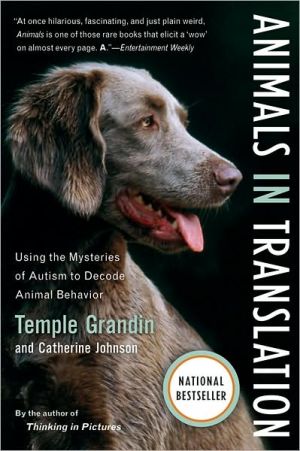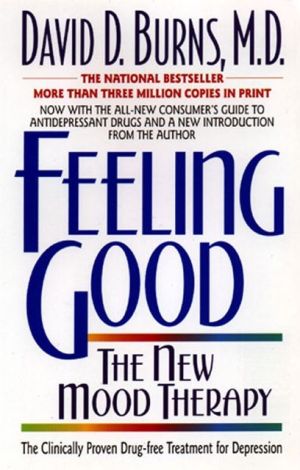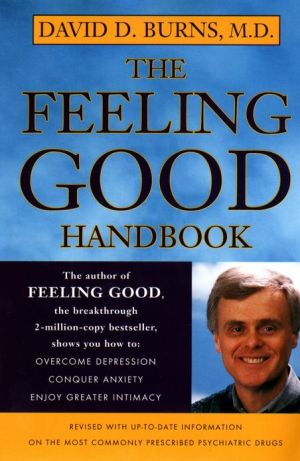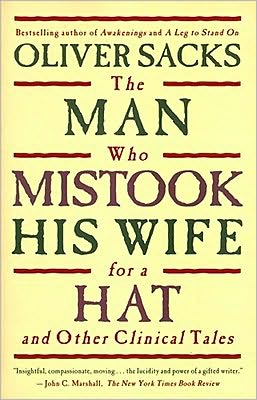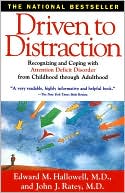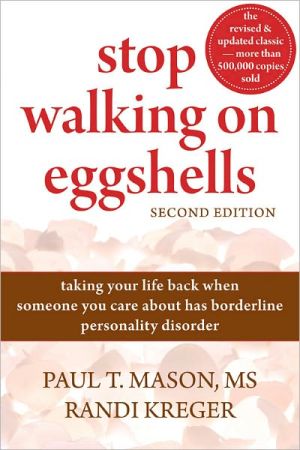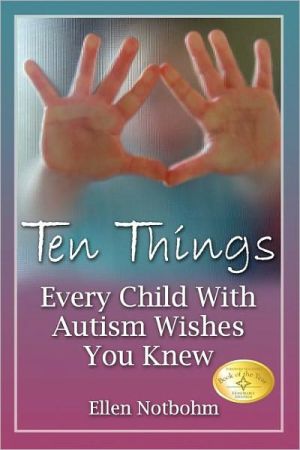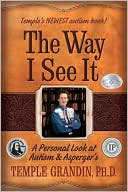Animals in Translation: Using the Mysteries of Autism to Decode Animal Behavior
I don't know if people will ever be able to talk to animals the way Doctor Doolittle could, or whether animals will be able to talk back. Maybe science will have something to say about that. But I do know people can learn to "talk" to animals, and to hear what animals have to say, better than they do now. —From Animals in Translation\ Why would a cow lick a tractor? Why are collies getting dumber? Why do dolphins sometimes kill for fun? How can a parrot learn to spell? How did wolves teach...
Search in google:
How is Animals in Translation different from every other animal book ever published? Animals in Translation is like no other animal book because of Temple Grandin. As an animal scientist and a person with autism, her professional training and personal history have created a perspective like no other thinker in the field, and this is her exciting, groundbreaking view of the intersection of autism and animal. Publishers Weekly Philosophers and scientists have long wondered what goes on in the minds of animals, and this fascinating study gives a wealth of illuminating insights into that mystery. Grandin, an animal behavior expert specializing in the design of humane slaughter systems, is autistic, and she contends that animals resemble autistic people in that they think visually rather than linguistically and perceive the world as a jumble of mesmerizing details rather than a coherent whole. Animals-cows, say, on their way through a chute-are thus easily spooked by novelties that humans see as trivialities, such as high-pitched noises, drafts and dangling clothes. Other animals accomplish feats of obsessive concentration; squirrels really do remember where each acorn is buried. The portrait she paints of the mammalian mind is both alien and familiar; she shows that beasts are capable of sadistic cruelty, remorse, superstition and surprising discernment (in one experiment, pigeons were taught to distinguish between early period Picasso and Monet). Grandin (Thinking in Pictures) and Johnson (coauthor of Shadow Syndromes) deploy a simple, lucid style to synthesize a vast amount of research in neurology, cognitive psychology and evolutionary biology, supplementing it with Grandin's firsthand observations of animal behavior and her own experiences with autism, engaging anecdotes about how animals interact with each other and their masters, and tips on how to pick and train house pets. The result is a lively and absorbing look at the world from animals' point of view. (Jan.) Forecast: Anyone who's enjoyed the work of Jeffrey Moussaieff Masson-and especially those who liked it but felt it a bit warm and fuzzy in spots-should appreciate this valuable, rigorous book. Copyright 2004 Reed Business Information.
People who aren’t autistic always ask me about the moment I realized I could understand the way animals think. They think I must have had an epiphany.\ \ But it wasn’t like that. It took me a long time to figure out that I see things about animals other people don’t. And it wasn’t until I was in my forties that I finally realized I had one big advantage over the feedlot owners who were hiring me to manage their animals: being autistic. Autism made school and social life hard, but it made animals easy.\ \ I had no idea I had a special connection to animals when I was little. I liked animals, but I had enough problems just trying to figure out things like why a really small dog isn’t a cat. That was a big crisis in my life. All the dogs I knew were pretty big, and I used to sort them by size. Then the neighbors bought a dachshund, and I was totally confused. I kept saying, “How can it be a dog?” I studied and studied that dachshund, trying to figure it out. Finally I realized that the dachshund had the same kind of nose my golden retriever did, and I got it. Dogs have dog noses.\ \ That was pretty much the extent of my expertise when I was five. I started to fall in love with animals in high school when my mother sent me to a special boarding school for gifted children with emotional problems. Back then they called everything “emotional problems.” Mother had to find a place for me because I got kicked out of high school for fighting. I got in fights because kids teased me. They’d call me names, like “Retard,” or “Tape recorder.” They called me Tape Recorder because I’d stored up a lot of phrases in my memory and I used them over and over again in every conversation. Plus there were only a few conversations I liked to have, so that amplified the effect. I especially liked to talk about the rotor ride at the carnival. I would go up to somebody and say, “I went to Nantasket Park and I went on the rotor and I really liked the way it pushed me up against the wall.” Then I would say stuff like, “How did you like it?” and they’d say how they liked it, and then I’d tell the story all over again, start to finish. It was like a loop inside my head, it just ran over and over again. So the kids called me Tape Recorder.\ \ Teasing hurts. The kids would tease me, so I’d get mad and smack ’em. That simple. They always started it, they liked to see me react. My new school solved that problem. The school had a stable and horses for the kids to ride, and the teachers took away horseback riding privileges if I smacked somebody. After I lost privileges enough times I learned just to cry when somebody did something bad to me. I’d cry, and that would take away the aggression. I still cry when people are mean to me.\ \ Nothing ever happened to the kids who were teasing. The funny thing about the school was, the horses had emotional problems, too. They had emotional problems because in order to save money the headmaster was buying cheap horses. They’d been marked down because they had gigantic behavior problems. They were pretty, their legs were fine, but emotionally they were a mess. The school had nine horses altogether, and two of them couldn’t be ridden at all. Half the horses in that barn had serious psychological problems. But I didn’t understand that as a fourteen-year-old. So there we all were up at boarding school, a bunch of emotionally disturbed teenagers living with a bunch of emotionally disturbed animals. There was one horse, Lady, who was a good horse when you rode her in the ring, but on the trail she would go berserk. She would rear, and constantly jump around and prance; you had to hold her back with the bridle or she’d bolt to the barn. Then there was Beauty. You could ride Beauty, but he had very nasty habits like kicking and biting while you were in the saddle. He would swing his foot up and kick you in the leg or foot, or turn his head around and bite your knee. You had to watch out. Whenever you tried to mount Beauty he kicked and bit—you had both ends coming at you at the same time.\ Y: GrotesqueMT-Condensed; mso-bidi-font-family: GrotesqueMT-Condensed" \ But that was nothing compared to Goldie, who reared and plunged whenever anyone tried to sit on her back. There was no way to ride that horse; it was all you could do just to stay in the saddle. If you did ride her, Goldie would work herself up into an absolute sweat. In five minutes she’d be drenched, dripping wet. It was flop sweat. Pure fear. She was terrified of being ridden. Goldie was a beautiful horse, though; light brown with a golden mane and tail. She was built like an Arab horse, slender and fine, and had perfect ground manners. You could walk her on a lead, you could groom her, you could do anything you liked and she was perfectly behaved just so long as you didn’t try to ride her. That sounds like an obvious problem for any nervous horse to have, but it can go the other way, too. I’ve known horses where people say, “Yeah you can ride them, but that’s all you can do with them.” That kind of horse is fine with people in the saddle, and nasty to people on the ground.\ \ All the horses at the school had been abused. The lady they bought Goldie from had used a nasty, sharp bit and jerked on it as hard as she could, so Goldie’s tongue was all twisted and deformed. Beauty had been kept locked in a dairy stanchion all day long. I don’t know why. These were badly abused animals; they were very, very messed up.\ \ But I had no understanding of this as a girl. I was never mean to the horses at the school (other kids were sometimes), but I wasn’t any horse-whispering autistic savant, either. I just loved the horses. I was so wrapped up in them that I spent every spare moment working the barns. I was dedicated to keeping the barn clean, making sure the horses were groomed. One of the high points of my high school career was the day my mom bought me a really nice English bridle and saddle. That was a huge event in my life, because it was mine, but also because the saddles at school were so crummy. We rode on old McClellands, which were honest-to-god cavalry saddles first used in the Civil War. The school’s saddles probably went back to World War II when they still had some horse units in the army. The McClelland was designed with a slot down the center of it to spare the horse’s back. The slot was good for the horse but horrible for the rider. I don’t think there’s ever been a more uncomfortable saddle on earth, though I have to say that when I read about the Northern Alliance soldiers in Afghanistan riding on saddles made out of wood, that sounded worse. Boy did I take care of that saddle. I loved it so much I didn’t even leave it in the tack room where it belonged. I brought it up to my dorm room every day and kept it with me. I bought special saddle soap and leather conditioner from the saddle shop, and I spent hours washing and polishing it.\ \ As happy as I was with the horses at school, my high school years were hard. When I reached adolescence I was hit by a tidal wave of anxiety that never stopped. It was the same level of anxiety I felt later on when I was defending my dissertation in front of my thesis committee, only I felt that way all day long and all night, too. Nothing bad happened to make me so anxious all of a sudden; I think it was just one of my autism genes kicking into high gear. Autism has a lot in common with obsessive-compulsive disorder, which is listed as an anxiety disorder in the Diagnostic and Statistical Manual. Animals saved me. One summer when I was visiting my aunt, who had a dude ranch in Arizona, I saw a herd of cattle being put through the squeeze chute at a neighboring ranch. A squeeze chute is an apparatus vets use to hold cattle still for their shots by squeezing them so tight they can’t move. The squeeze chute looks like a big V made out of metal bars hinged together at the bottom. When a cow walks into the chute an air compressor closes up the V, which squeezes the cow’s body in place. The rancher has plenty of space for his hands and the hypodermic needle between the metal bars. You can find pictures of them on the Web if you want to see what they look like.\ \ As soon as I caught sight of that thing I made my aunt stop the car so I could get out and watch. I was riveted by the sight of those big animals inside that squeezing machine. You might think cattle would get really scared when all of a sudden this big metal structure clamps together on their bodies, but it’s exactly the opposite. They get really calm. When you think about it, it makes sense, because deep pressure is a calming sensation for just about everyone. That’s one of the reasons a massage feels so good—it’s the deep pressure. The squeeze chute probably gives cattle a feeling like the soothing.\ \ Copyright © 2005 by Temple Grandin and Catherine Johnson All rights reserved. No part of this publication may be reproduced or transmitted in any form or by any means, electronic or mechanical, including photocopy, recording, or any information storage and retrieval system, without permission in writing from the publisher.\ \ Requests for permission to make copies of any part of the work should be mailed to the following address: Permissions Department, Harcourt, Inc., 6277 Sea Harbor Drive, Orlando, Florida 32887-6777.\
Ch. 1My story1Ch. 2How animals perceive the world27Ch. 3Animal feelings69Ch. 4Animal aggression131Ch. 5Pain and suffering179Ch. 6How animals think241Ch. 7Animal genius : extreme talents285Behavior and training troubleshooting guide309
\ The Oprah Magazine - O\ "Grandin's focus in Animals in Translation is not on all the 'normal' things autistics and animals can't do but on the unexpected, extraordinary, invaluable things they can."\ \ \ \ \ Entertainment Weekly"Neurology has Oliver Sachs, nature has Annie Dillard, and the lucky animal world has Grandin, a master intermediary between humans and our fellow beasts . . . At once hilarious, fascinating, and just plain weird, Animals is one of those rare books that elicits a 'wow' on almost every page. A."\ \ \ The New York Times Book Review"Inspiring . . . Crammed with facts and anecdotes about Temple Grandin's favorite subject: the senses, brains, emotions, and amazing talents of animals."\ \ \ \ \ Publishers WeeklyPhilosophers and scientists have long wondered what goes on in the minds of animals, and this fascinating study gives a wealth of illuminating insights into that mystery. Grandin, an animal behavior expert specializing in the design of humane slaughter systems, is autistic, and she contends that animals resemble autistic people in that they think visually rather than linguistically and perceive the world as a jumble of mesmerizing details rather than a coherent whole. Animals-cows, say, on their way through a chute-are thus easily spooked by novelties that humans see as trivialities, such as high-pitched noises, drafts and dangling clothes. Other animals accomplish feats of obsessive concentration; squirrels really do remember where each acorn is buried. The portrait she paints of the mammalian mind is both alien and familiar; she shows that beasts are capable of sadistic cruelty, remorse, superstition and surprising discernment (in one experiment, pigeons were taught to distinguish between early period Picasso and Monet). Grandin (Thinking in Pictures) and Johnson (coauthor of Shadow Syndromes) deploy a simple, lucid style to synthesize a vast amount of research in neurology, cognitive psychology and evolutionary biology, supplementing it with Grandin's firsthand observations of animal behavior and her own experiences with autism, engaging anecdotes about how animals interact with each other and their masters, and tips on how to pick and train house pets. The result is a lively and absorbing look at the world from animals' point of view. (Jan.) Forecast: Anyone who's enjoyed the work of Jeffrey Moussaieff Masson-and especially those who liked it but felt it a bit warm and fuzzy in spots-should appreciate this valuable, rigorous book. Copyright 2004 Reed Business Information.\ \ \ \ \ the Oprah Magazine O"Grandin's focus in Animals in Translation is not on all the 'normal' things autistics and animals can't do but on the unexpected, extraordinary, invaluable things they can."\ \ \ \ \ Library JournalA high-functioning autistic, Grandin (animal science, Colorado Sate Univ., Thinking in Pictures) has spent a lifetime empathizing with animals. She has also served as a consultant to farmers, ranchers, and slaughterhouses, helping them understand animals and their behavior in order to make their care (and/or slaughter) more humane. Grandin's new book on animal behavior draws on her experiences as both a scientist and an autistic person. Her compelling thesis is that there is a lot we still don't know about animal thought and learning but that her condition provides her with an insight into the issues that other people lack. Autism, Grandin argues, closely mimics the psychological condition of animals, in part because both lack facility with language. Indeed, she asserts that animals are autistic savants whose intelligence is unseen by most people. Grandin deals with wildlife only in passing, but she details some interesting laboratory studies using wild animals. A provocative title for universities and larger public libraries. [See Prepub Alert, LJ 9/1/04.]-Alvin Hutchinson, Smithsonian Inst. Libs., Washington, DC Copyright 2004 Reed Business Information.\ \
